Order Passeriformes Mass 24 g Rank Species | Phylum Chordata Family Fringillidae Higher classification Pyrrhula | |
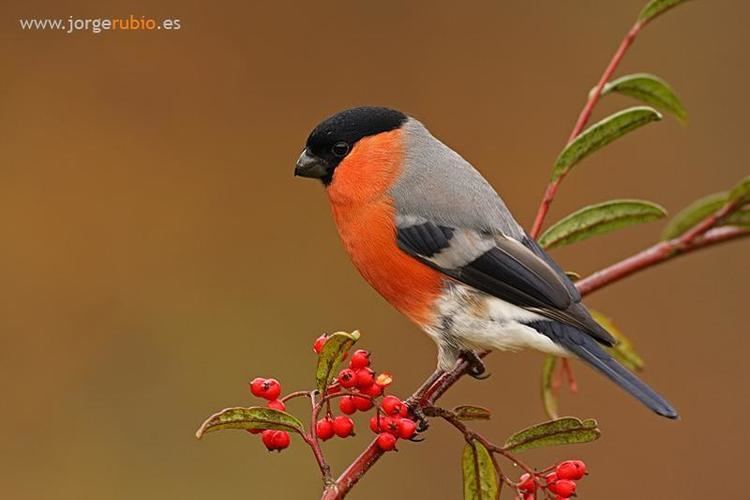 | ||
Conservation status Least Concern (Population decreasing) Similar Bird, Pyrrhula, Common chaffinch, European robin, Great tit | ||
The bullfinch, common bullfinch or Eurasian bullfinch (Pyrrhula pyrrhula) is a small passerine bird in the finch family Fringillidae. In Anglophone Europe it is known simply as bullfinch, as it is the original bird to bear the name bullfinch.
Contents
- Taxonomy and systematics
- Subspecies
- Description
- Distribution and habitat
- Behaviour and ecology
- Breeding
- Feeding
- References
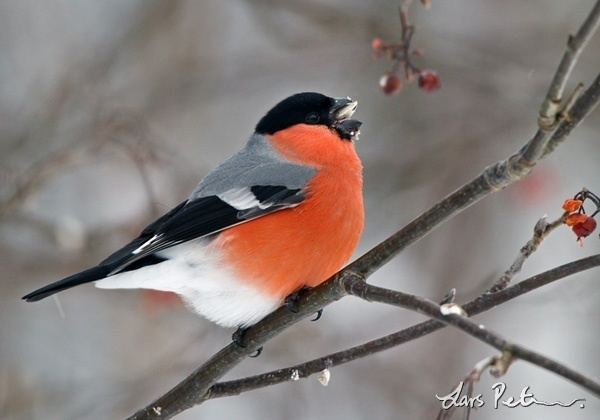
Taxonomy and systematics

The Eurasian bullfinch was listed in 1758 by Linnaeus in the 10th edition of his Systema Naturae under the binomial name Loxia pyrrhula. The Latin word pyrrhula comes from the Greek purrhoulas meaning 'worm eating bird' that is mentioned by Aristotle. The Latin name for the species had been used by Swiss naturalist Conrad Gesner in his Historiae animalium of 1555.
The closest relative of the bullfinches is genus Pinicola (pine grosbeak and crimson-browed finch).
Subspecies
Described subspecies include:
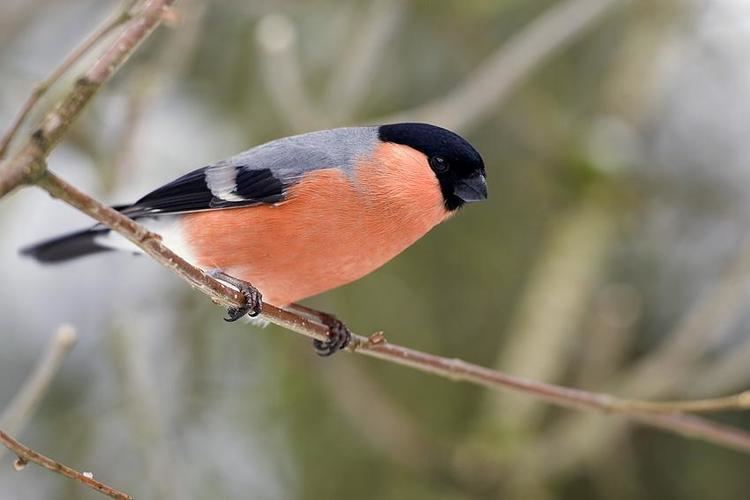
The Azores bullfinch (P. murina), previously regarded as a subspecies of the Eurasian bullfinch, is now recognised as a distinct species.
Description
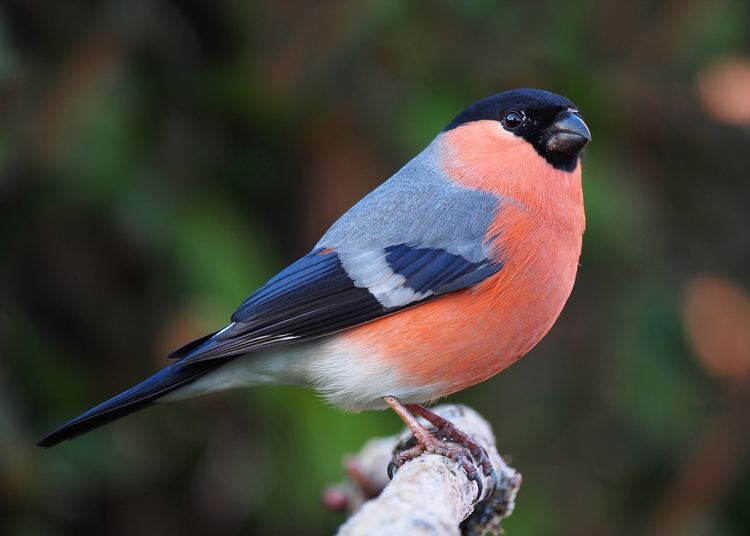
The bullfinch is a bulky bull-headed bird. The upper parts are grey; the flight feathers and short thick bill are black; as are the cap and face in adults (they are greyish-brown in juveniles), and the white rump and wing bars are striking in flight. The adult male has red underparts, but females and young birds have grey-buff underparts. It moulths between July and October, but males do not have the duller autumn plumage that is typical of some other finches. The song of this unobtrusive bird contains fluted whistles, and is often described as 'mournful'.
Distribution and habitat
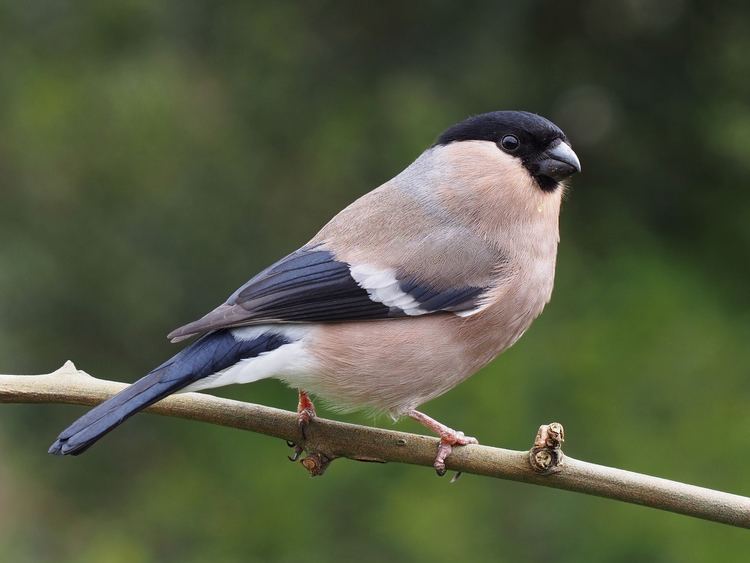
This bird breeds across Europe and temperate Asia. It is mainly resident, but many northern birds migrate further south in the winter. Mixed woodland with some conifers is favoured for breeding, including parkland and gardens.
Behaviour and ecology
This species does not form large flocks outside the breeding season, and is usually seen as a pair or family group.
Breeding
It builds its nest in a bush, (preferably more than four metres tall and wide), mature stands of scrub, or tree, laying four to seven eggs. It is peculiar among Passeriformes for having spermatozoa with a rounded head and a blunt acrosome.
Feeding
The food is mainly seeds and buds of fruit trees, which can make it a pest in orchards. Ash and hawthorn are favoured in autumn and early winter. If wild bird cover is planted for it, kale, quinoa and millet are preferred, next to tall hedges or woodland.
